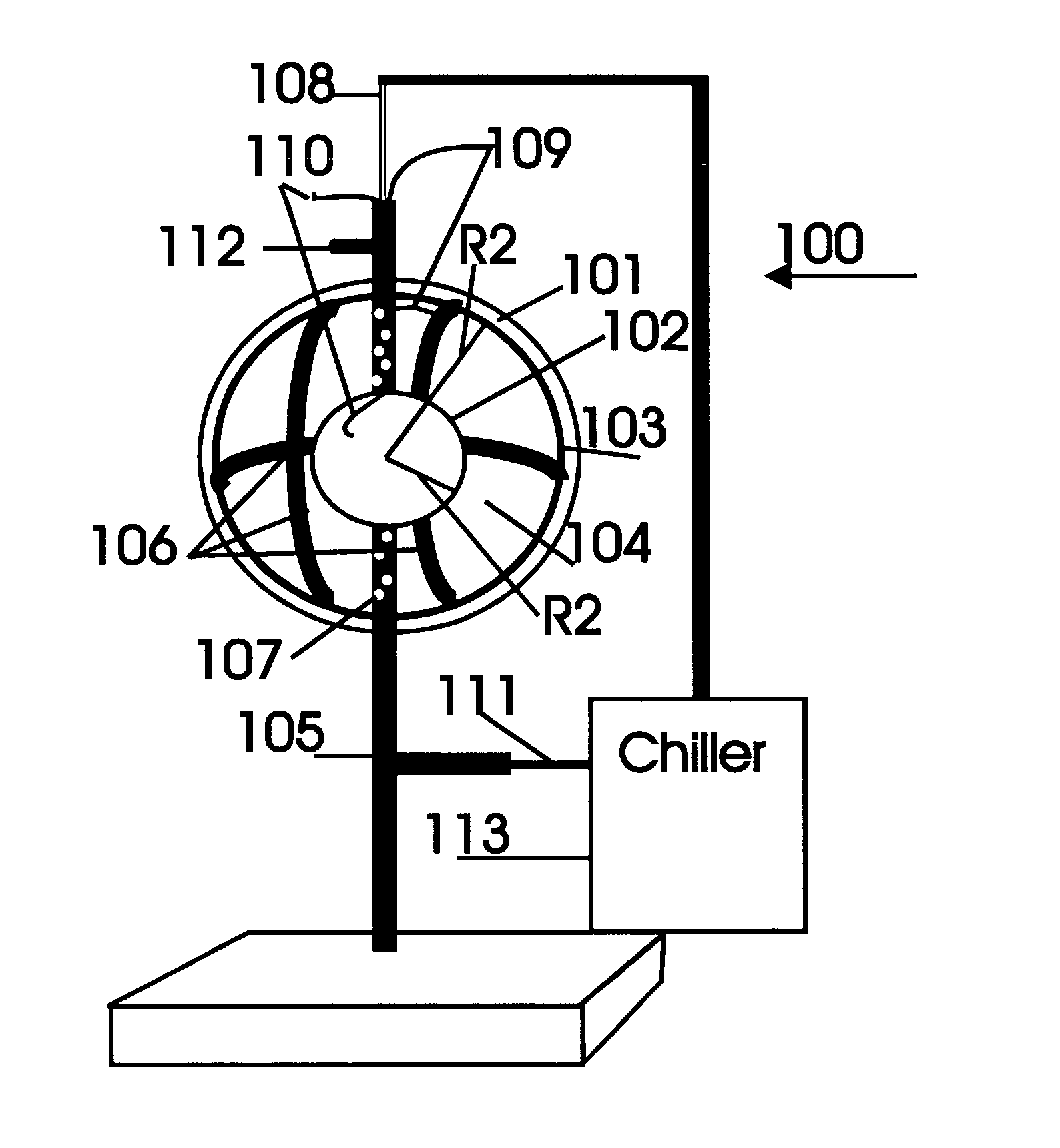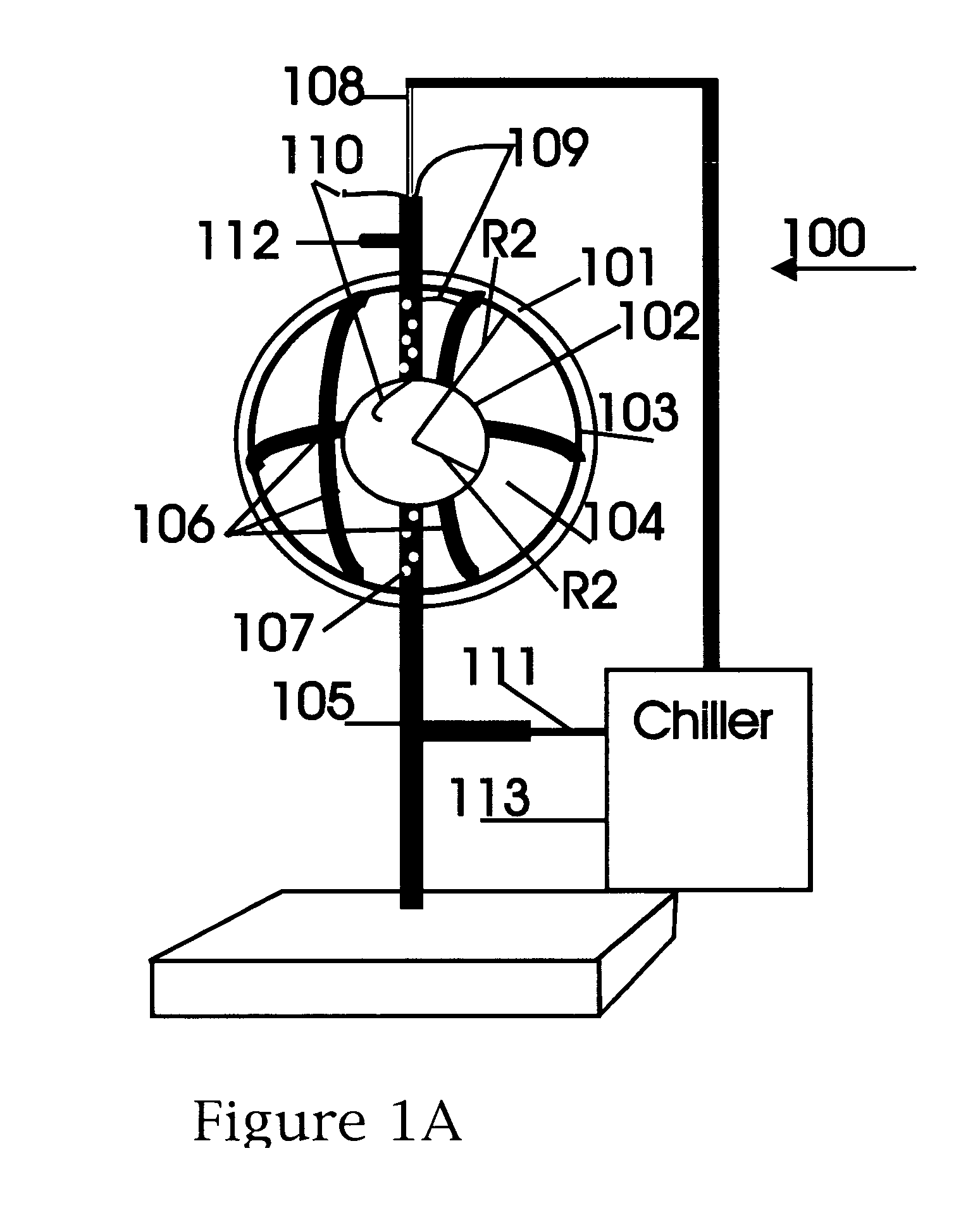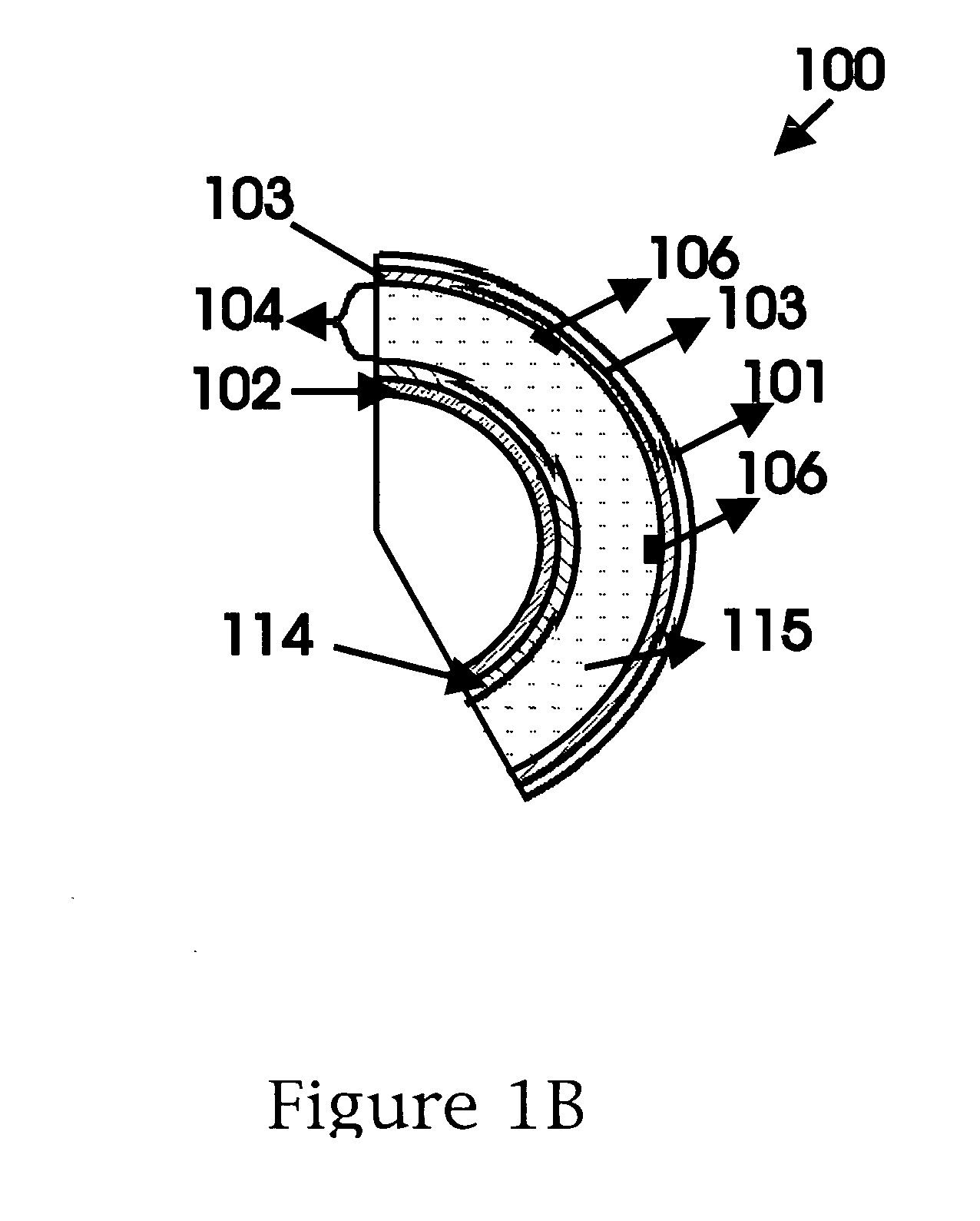Scalable spherical laser
a spherical laser and spherical resonant technology, applied in lasers, optical resonators, laser shapes and constructions, etc., can solve the problems of limiting the scalability and the maximum output power of conventional lasers, and achieve the effect of increasing both radii proportionally, scalable power source, and constant cavity length
- Summary
- Abstract
- Description
- Claims
- Application Information
AI Technical Summary
Benefits of technology
Problems solved by technology
Method used
Image
Examples
Embodiment Construction
[0020] A first embodiment of a scalable spherical laser 100 is shown in FIGS. 1A and 1B. The laser 100 is applicable for use with active amplifying media that do not rely upon vessel sidewall collisions for population inversion. These include molecular, chemical, and similar active media. The spherical laser 100 includes an outer, hollow, vessel-like, generally spherical body 101 (“outer sphere”) and an inner, hollow, generally spherical vessel 102 (“inner sphere”). The inner and outer spheres may be concentric. The outer sphere 101 is occasionally referred to herein as the output coupler (“OC”) of the laser 100. The outer sphere 101 (shown in cross section in FIG. 1 to illustrate internal components) has a radius R1 greater than that of a radius R2 of the inner sphere 102, e.g., R1>R2. The spheres 101, 102 may be made of glass, quartz, metal, another suitable substrate material, or a combination thereof. A reflective coating is provided on at least one surface of each of the concen...
PUM
 Login to View More
Login to View More Abstract
Description
Claims
Application Information
 Login to View More
Login to View More - R&D
- Intellectual Property
- Life Sciences
- Materials
- Tech Scout
- Unparalleled Data Quality
- Higher Quality Content
- 60% Fewer Hallucinations
Browse by: Latest US Patents, China's latest patents, Technical Efficacy Thesaurus, Application Domain, Technology Topic, Popular Technical Reports.
© 2025 PatSnap. All rights reserved.Legal|Privacy policy|Modern Slavery Act Transparency Statement|Sitemap|About US| Contact US: help@patsnap.com



